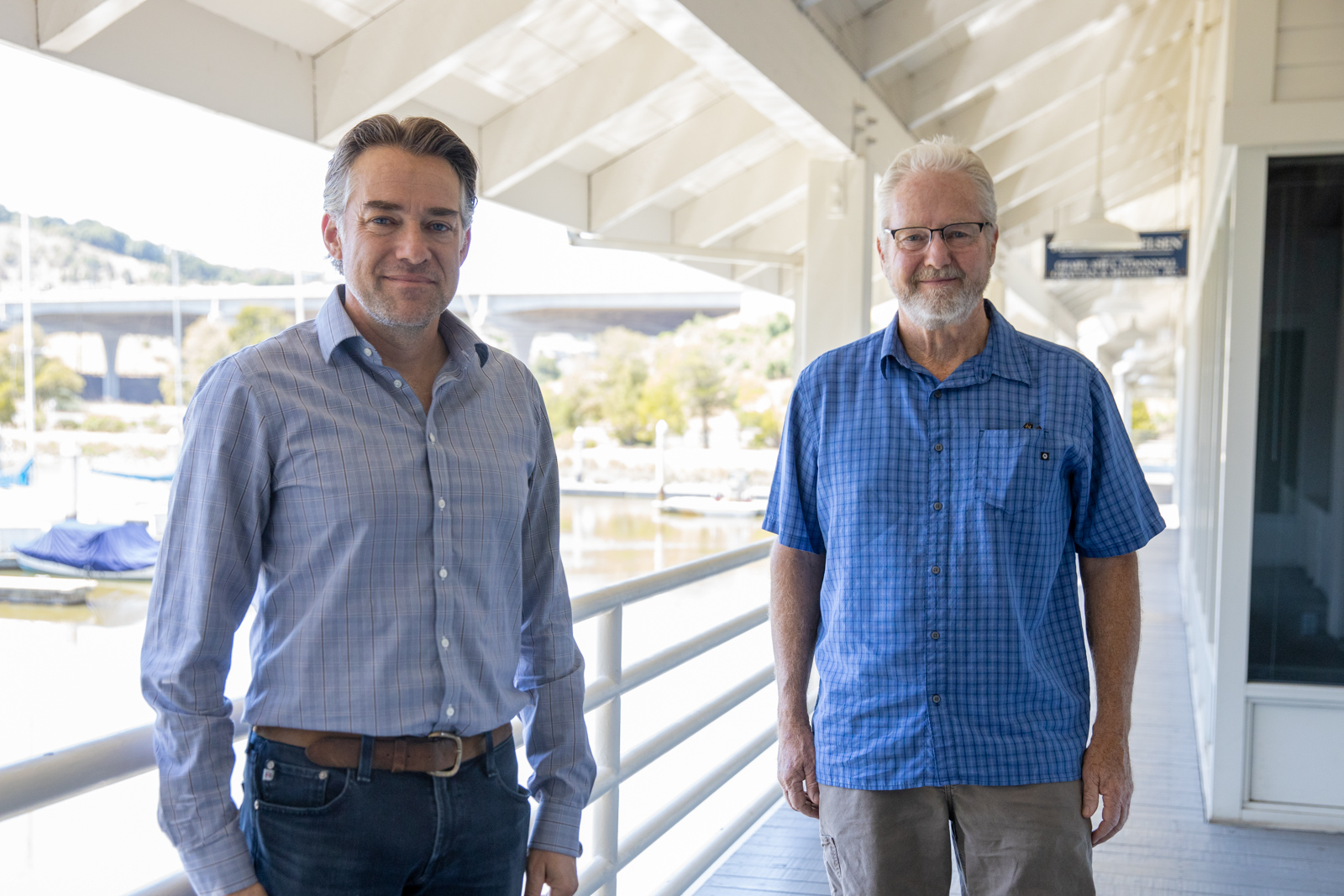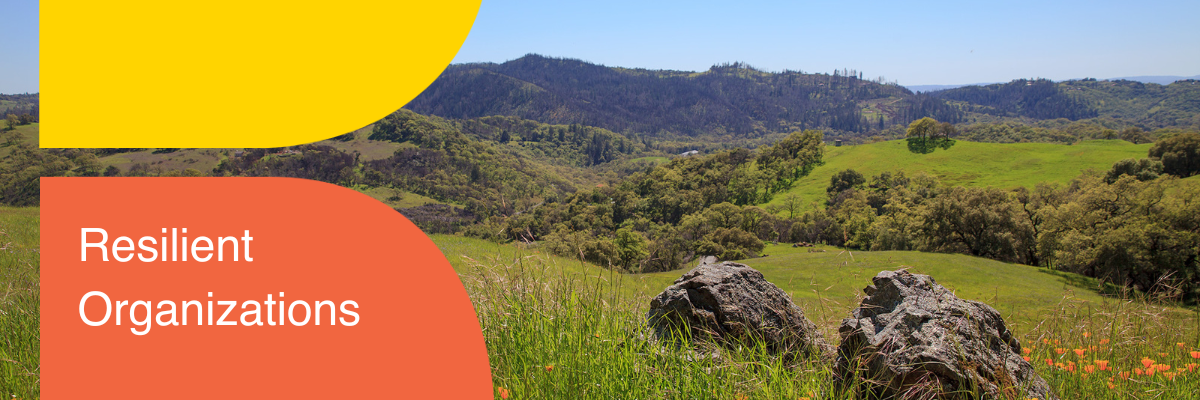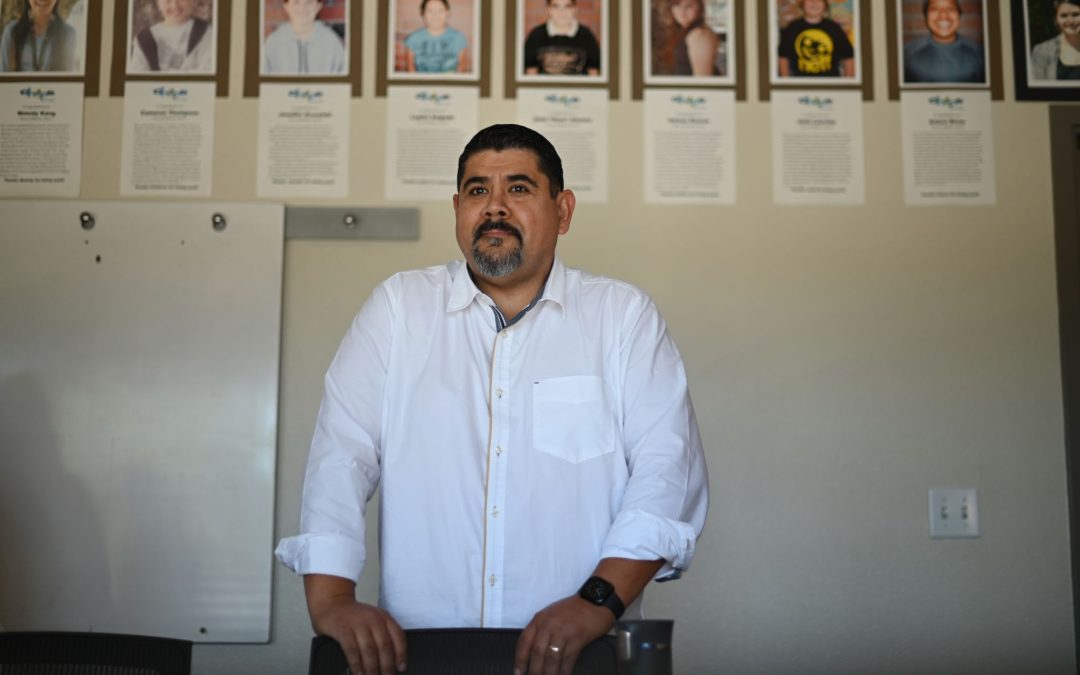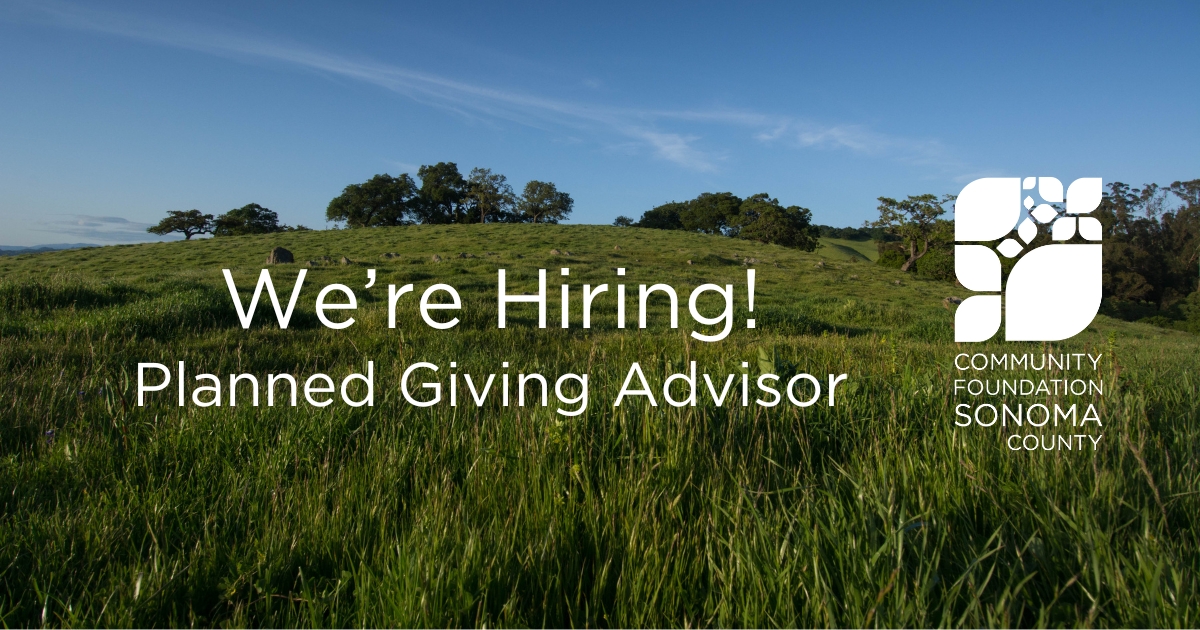Interview by Dani Burlison. Photo: Hanford ARC Vice President and CEO Mark Cederborg with founder Doug Hanford, by Caitlin Childs
Sonoma County based Hanford Applied Restoration and Conservation (Hanford ARC) is a general engineering and landscape contractor specializing in ecological restoration. Hanford ARC focuses on mitigating damage to our ecosystems through activities such as stream and wetland restoration, vegetation management, erosion control, civil works construction, and site maintenance in environmentally and culturally sensitive resource areas.
Co-founded by Sonoma Valley local Doug Hanford in 1984, Hanford ARC is now led by Vice President and CEO Mark Cederborg. Over the past 35 years, the company has grown to a staff of over 100 laborers, operators, superintendents, estimators, conservationists, botanists, natural resource specialists, and water resource professionals with operations based in Petaluma, CA, and projects throughout the state.
Hanford ARC’s work is values-driven from both an environmental and community perspective, and the company, with the guidance of Charitable Giving Advisor Sally Bolger and Community Foundation Sonoma County’s Senior Philanthropy Officer Elly Grogan, has developed a charitable giving practice that ensures they can support strategically selected nonprofits, even during these uncertain economic times.
We sat down with Doug Hanford and Sally Bolger over Zoom and discussed their history, how the COVID-19 pandemic has impacted their work, and how their partnership with CFSC helps them to create a just and sustainable Sonoma County.
CFSC: How has the pandemic impacted business for you and the company overall?
Doug Hanford: It has definitely impacted us. Initially all our projects were shut down. We had everybody working from home or staying home, but then it became clear that our work is, in many cases, essential. We maintain natural areas where there are dynamic species, good and bad, that need to be managed seasonally and time is of the essence. We also do erosion control and environmental compliance for Caltrans and PG&E, and that is considered essential as well. We worked hard to put proper safety protocols in place so we were able to continue operating.
Sally Bolger: We’re so grateful that restoration work is recognized as essential and that Hanford ARC was able to continue to keep operating. But I don’t want to gloss over how hard Doug and Mark worked to keep everybody employed. They really worked toward the goal of having the economic impact be minimized for their employees, and keep folks going until they could get further into the spring, when the larger part of their projects naturally come on line because the restoration season is opening up.
CFSC: What did that look like? How did your company adapt?
Doug Hanford: We moved some things around, and revised schedules on jobs to create a more even flow of work. We were able to be more creative with how we got people safely to the field and onto the job sites. Also we implemented additional safety protocols: lots of extra restrooms and handwashing stations. There was a while there when we only allowed one person to a truck. Unfortunately, that meant more vehicles on the road, but we got more creative about people driving straight from home to the job, so there was a lot of adaptation.
Sally Bolger: One of the things that they also did was, there were some crews that they couldn’t quite find work for. The HanfordARC Fund has certain non-profit organizations that we build deep relationships with, and often of those organizations have significant land management responsibilities, such as Sonoma Land Trust, the Golden Gate National Parks Conservancy, Audubon Canyon Ranch. I reached out to the Golden Gate National Parks Conservancy, because of course they’re incredibly impacted by this, by Alcatraz being shut down, and the loss of all of their different revenue streams. They were struggling to get the things done that needed to happen in the spring, and we offered them a crew. This kept our Hanford employees working and met a need of one of our partner organizations that couldn’t have been met any other way. Writing them a check wouldn’t have done it because they couldn’t have hired anybody.
CFSC: We’re curious too about your relationship with the Community Foundation and how you first started working with them. What’s the back story there?
Doug Hanford: We feel deeply about what we do. The whole idea behind this company is mission driven and while it’s a for profit company, we’re very conscious of the work we do, the people we hire and the clients we work with. We also feel strongly about giving back and supporting lots of important organizations in sectors directly related to us and building strong community as well. We have a history of doing that and we feel strongly about it. What we’ve struggled with over the years is providing consistent, reliable financial support to the nonprofits and causes we want to support. We are in construction. Some years are better than others, and we are also on a calendar year, so we don’t often know what our profitability is going to be until right towards the end of the year, and our donation amounts have to fluctuate with our profits year to year.
Each year we would run into the problem of having to give all of a sudden before December 31st, when we still might not totally know what our yearly profits looked like. We would hold off making donations as long as possible and then we’d often be right in the middle of the holidays trying to make these decisions and writing checks. What the foundation, and the donor advised fund, allows us to do is to set the money aside. We can say, “Okay, we think we can give this much this year,” and we put that in the fund. And then we can be more thoughtful about how we give it throughout the next and following years. Sally’s just been really wonderful in helping us do that effectively, by helping us establish our priorities: where we want to give, how much we want to give to the protecting the environment, how much we want to give to community building, and then how much we want to have just for spur of the moment needs that come up intermittently. One of the wonderful things that happens with the fund is that you allocate according to your priorities ahead of time and you don’t have to be reconciling it with whatever you’re feeling emotionally at the moment about your business or the economy.
We’re struggling like many others this year, not really knowing how it’s going to be, whether we’re going to lose or break even. However, we do have money from previous years set aside in the fund already, so we can actually move ahead with current giving, regardless of what our profitability ends up being this year. And, not only do we have that money to give, but we were able to give that money at this time when our nonprofit partners are really suffering due to reduced revenue from their other funding sources.
Maybe we were planning on giving in November or December, but why not now? It’s already set aside. Let’s give it to them now when they really can use it. That’s the beauty of the donor advised fund.
CFSC: Has the Community Foundation been instrumental in helping you hone your focus on the type of organizations that you want to support?
Sally Bolger: Despite that mad dash at the end of the year, Hanford ARC’s giving was always remarkably focused. Doug and Mark care very deeply about supporting the health of their environment and the health of their community. They had always particularly focused on the communities of their workforce, the nonprofits working in environmental restoration, and the organizations who are out there working to protect the environment in general. Doug and Mark had always given so much thought to their giving that when they opened the donor advised fund, and I was lucky enough to come on board, it was really powerful to work with the Community Foundation to create a strategy to not just carry that focus forward, but to make our giving event more impactful.
Elly (Grogan) helped us to use the Community Foundation tools to review our past giving, identify our target areas, and then create a giving strategy which included intentionally holding some money aside to be able to meet unexpected needs in real time. Needs that oftentimes fall through the cracks of regular sources of support, or bigger funds or foundations that have more structure around their giving.
Doug Hanford: Let me just add, Elly knows many of these organizations well and has relationships with them. She has been able to help advise us on how to give to these organizations effectively. That has been very helpful.
CFSC: How do you strategize as a company with CFSC and schedule your donating?
Sally Bolger: I keep in regular contact with Elly. She’s primarily the way that we find out about unmet needs or new organizations we might want to partner with. For example, Elly had found one really important unmet need for us to support last fall in response to the power outages.
When the shelter in place happened, Doug and Mark and I immediately knew that hunger and job loss were going to be huge, and I asked Elly to keep an eye out for needs that we could meet. The Conservation Corps of the North Bay reached out to her and explained that their trainees didn’t qualify for unemployment, so the managers of the Conservation Corps of the North Bay were going to the food pantry and bringing the food back to the offices and giving the food to their trainees. We were able to donate some money so that, in addition to the food pantry staples, then they could be given gift cards to go to the grocery store for fresh things, for household items and sanitation supplies.
Doug Hanford: That’s an important part of what we do. We like having a part of our fund that is totally discretionary for those moments of unanticipated need.
CFSC: What types of programs are you centering and focusing on with your giving?
Sally Bolger: Hanford ARC as a company has always tried to provide, regardless of being required to, a living wage to their employees, opportunities for training, healthcare, etc. But Hanford ARC also understands that a lot of their employees have families at home who may not have that type of support. And so, one of the main areas of focus for our giving is organizations that help the communities of the Hanford ARC workforce thrive.
We also focus on the nonprofits that do restoration work, who oftentimes are really struggling for operational support. They play a critical role in restoring our environment, and so we want to provide assistance to keep them going so they can keep writing the grants and do the restoration work, so that they can meet their mission.
Then more broadly, we support environmental and land protection efforts. And, of course, there is our response fund that has been used to meet needs after the fires; it’s also been used after the floods, the power outages, and now the shelter in place.
CFSC: Is there anything else you’d like to share about your relationship with Community Foundation?
Sally Bolger: I think we’re all astonished at how powerful having a donor advised fund has turned out to be. The initial instinct in creating this fund was to move the giving off the end of the year, so that in the years where Hanford was very profitable more money could go into the fund, and then in years when Hanford possibly wasn’t so profitable or even lost a little money, there would still be money in the fund to continue to give. Our goal was to be a reliable source of support for a core group of organizations in our three target areas.
What we’ve seen with shelter in place, of course, is we don’t know how profitable Hanford ARC is going to be at the end of the year. They’re doing everything they can do to hold up. But the donations that were made into the fund in the last few years will enable us to provide consistent support for our partner organizations. We have a two-year “runway” already in the fund. Our goal of providing long-term, reliable support has been met in ways much more quickly than we ever thought. Having the donor advised fund has just played out in remarkable ways for us.
Doug Hanford: We’ve come to this point where we can no longer as a society continue to live off extractive businesses and systems indefinitely. We need to work towards transforming into an economy that is more integrated, cyclical and sustainable in nature. That’s the overarching issue that we’re all ultimately facing. We’re trying to do our part to develop and support our industry and the resources that we’re going to need in the future for all systems to function sustainably.











